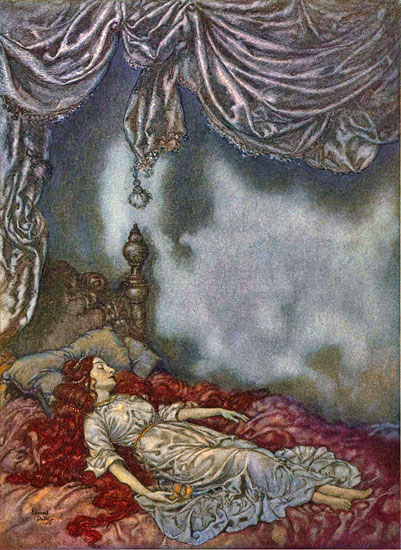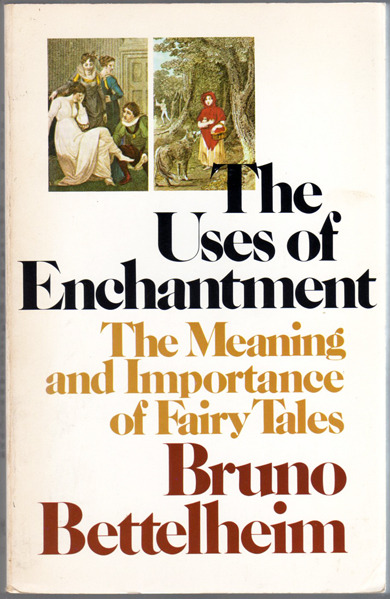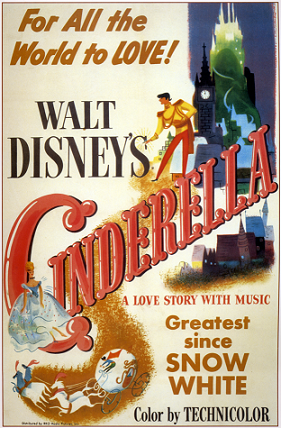Walter Crane
Maroula's brothers returned home and noticed the apple. They removed it from her mouth, and she came back to life.
But the old woman came back, this time giving Maroula a ring. Maroula's brothers did not notice the ring, and thinking there was nothing they could do, they put her in a golden coffin.
Ludwig Grimm
One day a king's son discovered Maroula in the coffin, and happened to take the enchanted ring off her finger, restoring her life. The prince and Maroula were married, but the Prince's mother was jealous. Maroula had given birth to twins, and her mother in law crept into the room and cut off the children's heads. She blamed Maroula, so the prince believed that Maroula was to blame. He ordered her hands be cut off and sewn into a sack together with the bodies of her children, and the sack hung around her neck, and his wife chased away from his palace.
Maroula met a kind monk who attached her hands and the children's heads back to their bodies, restoring them to life. Years later the Prince was reunited with his family and discovered the truth. The Prince's mother was put in a barrel of pitch, and toss her into the sea to be burned. The mother of Erotas decided Maroula had suffered enough and allowed her to live unchallenged.
This variant of Snow White struck me as being especially violent, even considering the violent family of tales it belongs to. The characters seem to delight in punishing each other in cruel ways, made more eerie by the matter of fact tone of the narrator. The punishments aren't even always logical-"tossed into the sea to be burned" doesn't even make sense.
Although we're used to the villain getting her punishment, we don't tend to hear versions today where the main characters must suffer unjustly. We take out the part of Grimm's Rapunzel where Rapunzel must tend to her children (also twins, incidentally) in the desert and her prince wander around blind from the thorns outside of the tower before they are finally reunited. We rarely hear that every step the Little Mermaid took produced pain like stepping on knives. And although many people are loving the idea of "dark fairy tales" these days, and we're getting more used to some level of danger and violence associated with the tales that many still think of as children's stories exclusively, even our minds are shocked by the idea that Snow White's hands were chopped off and she was forced to carry them around in a sack with the bodies of her dead children.
But the violence in this Greek tale has an important difference: it does not take place in a realistic world where actions are final. In this world, people can come back to life and severed limbs can be restored. Almost like Looney Tunes cartoons, where no matter what manner of pianos and anvils crush characters, they always return without a scratch. The viewer learns that nothing they see is lasting or final. I wonder how many stories from various times in history contained miraculous healings like this and how they impacted the listening experience?
Yet fairy tales don't (usually, at least) make the violence appear funny, such as in cartoons. The reader/listener still feels upset at the injustice and a sense of restoration at the ending. Yet the characters still have to suffer-although how much of that the listener takes the details to heart may depend on their expectations of story formula more than anything else.
I'm not even weighing in (in this post, at least) on the whole "what is appropriate for children" topic-just observing that not all story violence is the same, or experienced the same way.
*Story source-"Maroula and the Mother of Erotas", from Surlalune's Sleeping Beauties: Sleeping Beauty and Snow White Tales From Around the World















